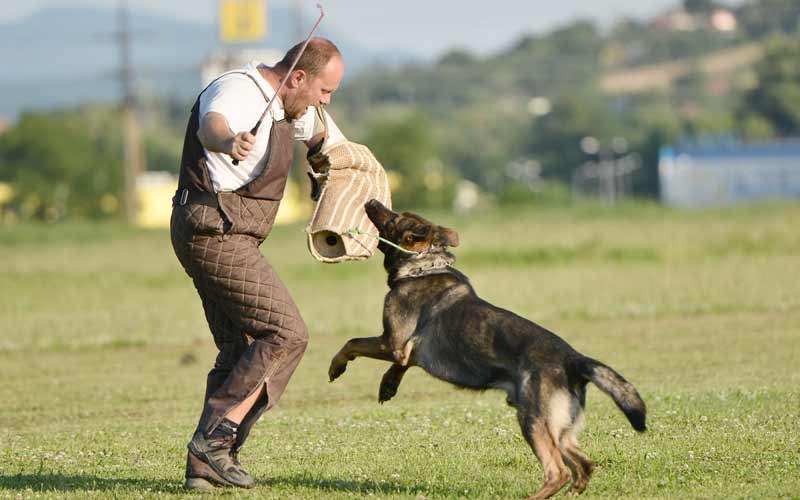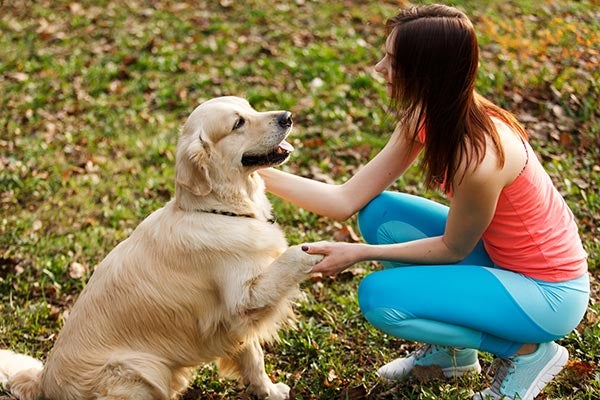How Professional Dog Training Can Enhance Your Dog’s Skills and Behavior
How Professional Dog Training Can Enhance Your Dog’s Skills and Behavior
Blog Article
Novice's Overview to Successful Pet Dog Training in the house
Successfully training a pet in your home needs a nuanced understanding of canine habits and efficient communication methods. Developing clear training objectives, utilizing top quality incentives, and preserving consistency throughout family members are essential elements. Incorporating training into daily regimens can boost both involvement and retention. Many amateur instructors run into challenges that might hinder progression. To navigate these intricacies successfully, it's vital to explore a number of key elements that can change your technique and cause a harmonious connection with your family pet. What fundamental principles should every novice grasp to make certain success?
Recognizing Pet Actions
Recognizing pet actions is essential for reliable training and cultivating an unified partnership in between humans and their canine buddies. Canines communicate primarily with body movement, articulations, and faces, making it vital for owners to interpret these signals properly. Acknowledging habits such as tail wagging, growling, or cring can offer understandings right into a pet dog's mood and intentions.

Usual behavior concerns, such as hostility, anxiousness, or extreme barking, typically come from misunderstandings or unmet requirements. Observing and attending to these concerns quickly can avoid rise and make sure a favorable training experience. By fostering a deep understanding of dog behavior, proprietors can customize their training approaches to suit their canine companions, inevitably leading to a contented and well-behaved pet dog.
Crucial Training Devices
A well-equipped training area can significantly improve the performance of pet training at home. Important training tools make sure that both the instructor and the pet can involve in productive sessions that foster learning and bonding.

Purchasing a tough leash and a comfortable, well-fitting collar or harness is essential for security and control. These devices help establish borders and guarantee the pet stays safe during training. Additionally, an assigned training area, without interruptions, help concentration for both the fitness instructor and the dog.
Educating help such as training pads, cones, or agility devices can also enhance the experience by introducing range and obstacles. Having a note pad or digital application for tracking progress can be very useful, allowing you to keep in mind successes and locations for renovation. Using these important devices will certainly produce a positive training setting and lay the foundation for effective discovering.
Developing a Training Routine
Developing a regular training regimen is important for effective canine training at home. A well-structured routine not only aids in reinforcing desired habits however additionally provides your dog with a sense click this site of security and predictability. To develop a reliable training regular, start by determining particular training objectives, such as standard commands, chain strolling, or house-breaking.
Pick visit their website a marked time daily for training sessions, preferably when your pet is alert and receptive. Sessions needs to be short, roughly 5 to 15 minutes, to preserve emphasis and stop exhaustion. Uniformity in timing and atmosphere will certainly boost your pet's understanding experience.
Include training into daily tasks to reinforce abilities. Method commands throughout walks or mealtime, which incorporates learning into all-natural routines. Additionally, continue to be flexible and change the regular as required, suiting your canine's energy levels and state of mind.
Favorable Support Techniques
Favorable support methods are fundamental to reliable pet training, advertising desired habits with rewards instead than punishment. This technique makes use of favorable stimuli, such as deals with, appreciation, or playtime, to encourage canines to repeat particular actions. The foundation of this strategy is timing; incentives ought to be given promptly following the preferred actions to create a clear association.
When carrying out positive reinforcement, it is important to choose rewards that are encouraging for your pet dog. High-value deals with, such as little pieces of hen or cheese, can be particularly reliable throughout training sessions. Additionally, differing the rewards can keep your dog's passion and interest.
Beginning with easy commands, like "rest" or "stay," and progressively progress to much more intricate jobs. Uniformity is vital; make certain that all member of the family utilize the same commands and benefit systems to stay clear of complication.
Furthermore, it is essential to stay individual and prevent disappointment. Pets, like humans, find out at their own rate. By promoting an encouraging training environment with positive reinforcement, you can boost your dog's discovering experience while strengthening the bond between you and your fuzzy friend, preparing for effective training results.
Usual Educating Challenges
While training a pet dog in the house can be a gratifying experience, it commonly includes a collection of typical obstacles that can evaluate both persistence and uniformity. One prevalent issue is distraction. Canines may come to be conveniently sidetracked by noises, movements, or even fragrances in their setting, making it difficult to preserve their emphasis throughout training sessions.
An additional obstacle is variance in commands and support. If relative utilize different hints or rewards, it can confuse the pet dog and impede progression. Establishing a unified approach is vital for effective interaction.
In addition, dogs can experience irritation or stress and anxiety, specifically if they do not recognize what is expected of them. This can bring about unwanted habits, such as barking or chewing.
Ultimately, the timing of reinforcement is essential (Dog training). Postponed incentives can reduce the efficiency of positive support, as pet dogs may fail to attach the habits with the reward
Getting over these obstacles needs commitment, clear interaction, and a structured training strategy. Recognizing and dealing with these usual challenges will certainly lead the way more for a much more effective and enjoyable training experience in your home.
Conclusion
In final thought, effective dog training at home demands a detailed understanding of canine behavior and effective communication techniques. By establishing clear training goals and using top quality treats together with positive reinforcement, the training procedure ends up being much more rewarding for both the instructor and the pet dog.
Developing a regular training regimen is crucial for effective canine training at home.Positive reinforcement techniques are essential to efficient pet dog training, promoting preferred habits through rewards instead than punishment (Dog training). By fostering an encouraging training setting with favorable support, you can boost your pet dog's discovering experience while enhancing the bond between you and your fuzzy companion, laying the foundation for effective training outcomes
In conclusion, effective pet dog training at home requires a comprehensive understanding of canine behavior and effective interaction methods. By establishing clear training objectives and utilizing high-grade treats along with favorable support, the training process becomes extra satisfying for both the pet and the trainer.
Report this page